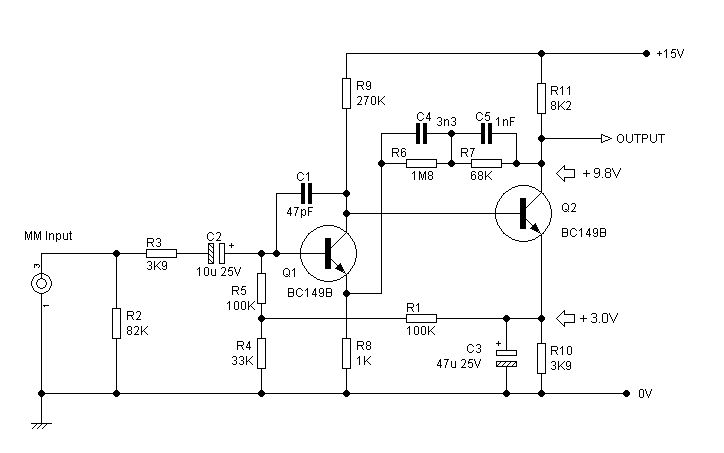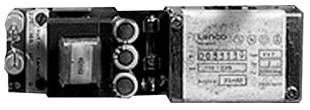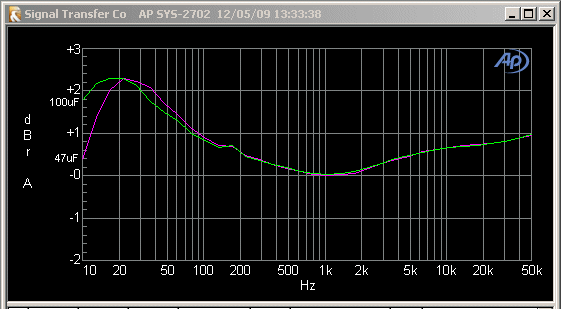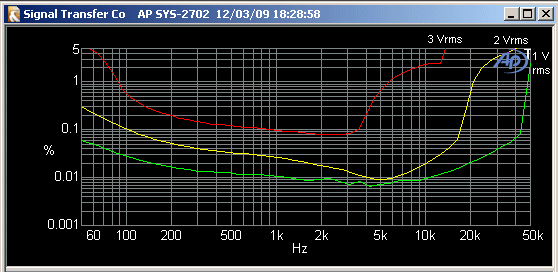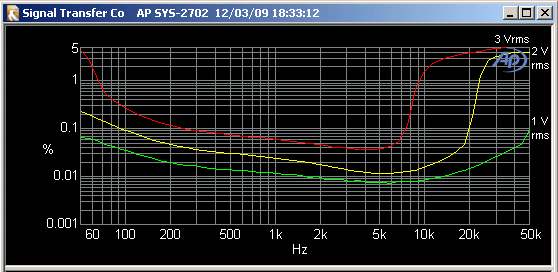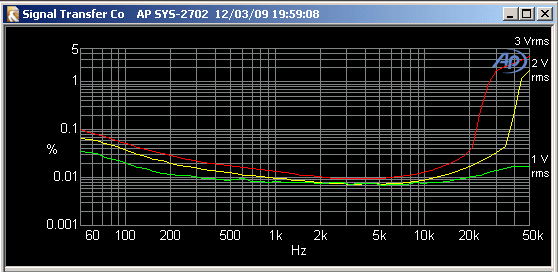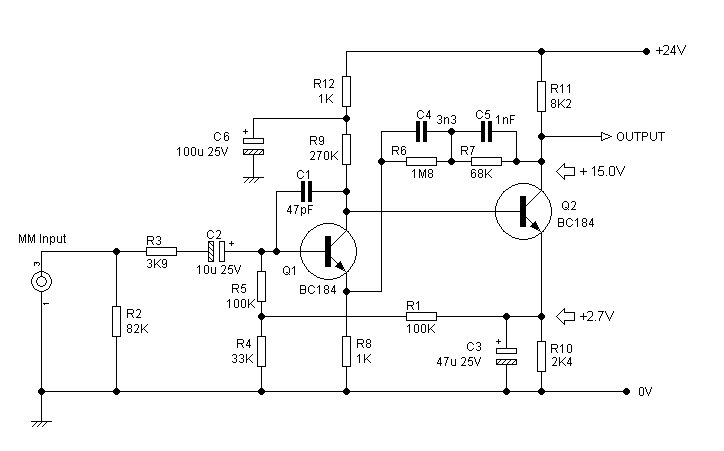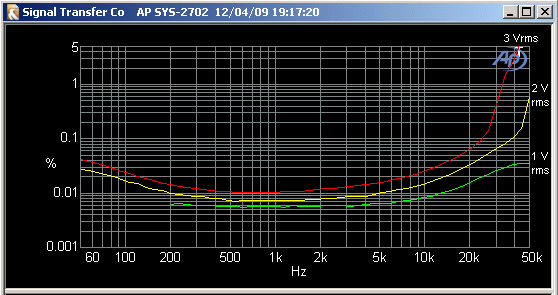As I stated in Small Signal Audio Design, the first two-transistor MM stage is generally accepted to have been put forward by J. Dinsdale, in an article "Transistor high-quality audio amplifier", in Wireless World for January 1965. This article may be 45 years old but it is still worth reading if you can got hold of it, not least because it discusses how to make an MM preamplifier using just one transistor.
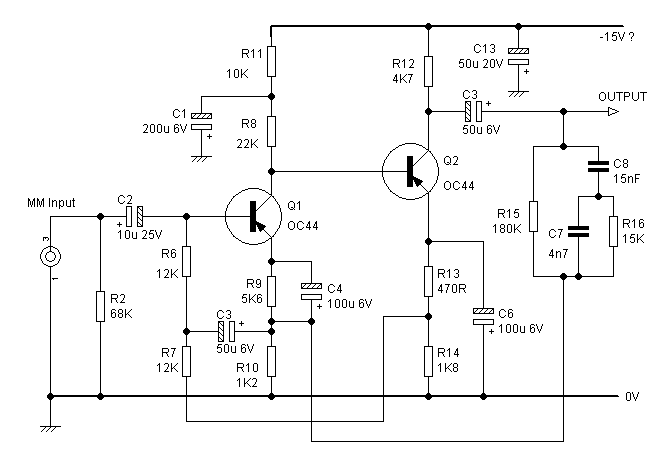 |
| Fig 8
The circuit of the Dinsdale MM stage.
You will note at once that the circuit is upside-down to modern eyes, with a negative supply rail at the top. This was common in circuits of the era, and stemmed from the fact that most germanium transistors were PNP, so if you drew the emitter at the bottom (which is where people were used to drawing valve cathodes) then inevitably you end up with a negative supply rail at the top.
When silicon transistors came in, they were more commonly NPN, so a sigh of relief went up all round as we reverted to the more logical approach of having the most positive rail at the top.
I have not so far tried building this circuit, due to the difficulty of obtaining the transistors.
|
Comparing this circuit with Figure 1, you can see that there are the characteristic two separate feedback loops, with DC feedback through R13, R14 and R7, and AC feedback to Q1 emitter via the RIAA network R15, C8, R16, C7. Note that the DC path through this network is blocked by C3.
C3 bootstraps R6 to raise the input impedance high enough to give 47K in conjunction with loading resistor R2; disconcertingly Dinsdale refers to this as "feedback" in his article, which it is not.
The OC44 was a PNP germanium transistor made by Mullard. Remarkably, it is still in demand as it is held to give a unique sound in vintage-style fuzz boxes; see www.californiavalveworks.com.
The supply rail voltage is not precisely known, as in the complete preamplifier circuit the MM stage is fed through a network of RC filters that leave the final voltage in some doubt. It clearly is not greater than 20V, judging by the rating of C13, and it seems pretty safe to assume it was around 15V. However the OC44 had a collector breakdown voltage of only 15V, so the rail might have been lower- perhaps 12V.
This circuit uses more parts than the circuit of Figure 1, largely as a result of the different DC bias arrangements. Apart from the transistors, it has 12 resistors and 5 electrolytic capacitors. Figure 1 has (ignoring EMC filtering) 10 resistors and 2 electrolytic capacitors.








